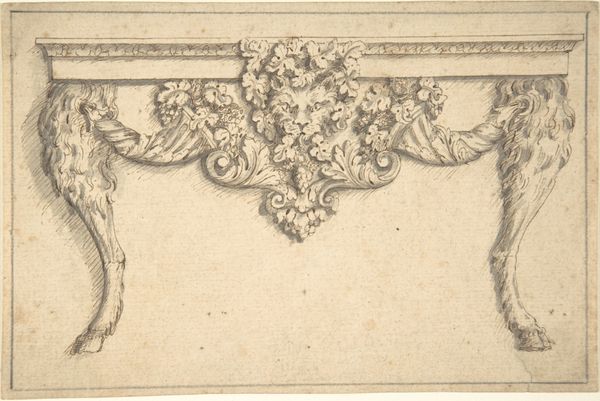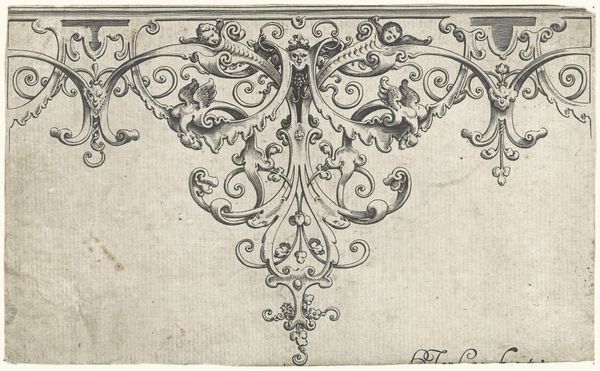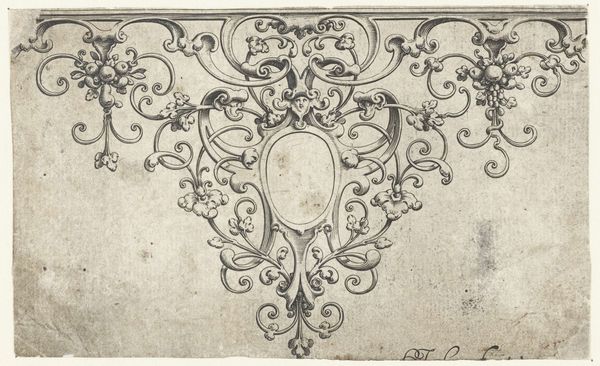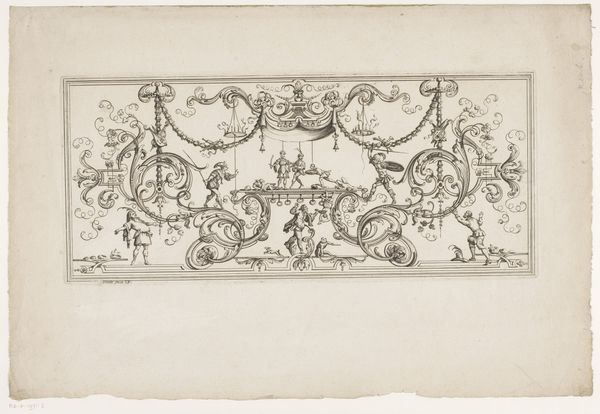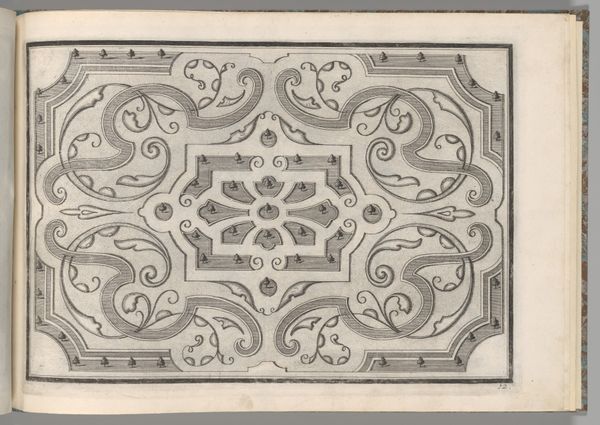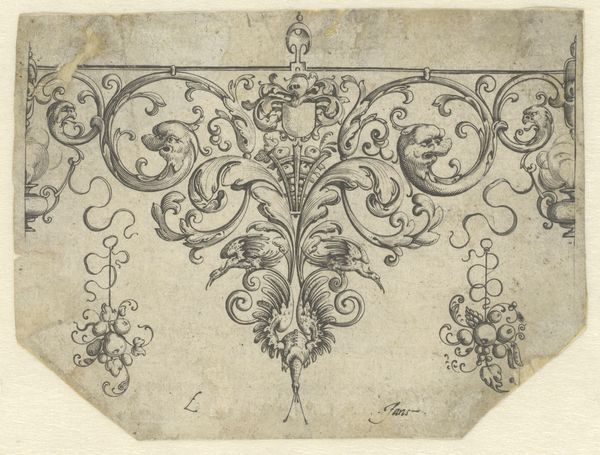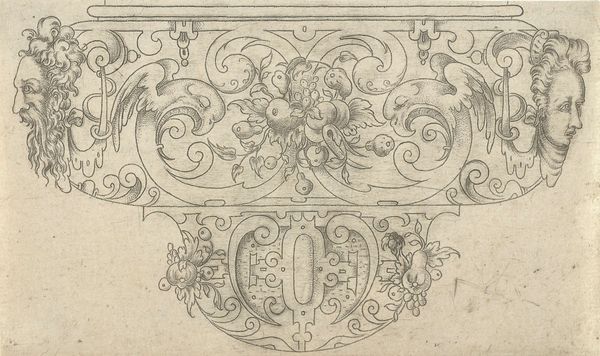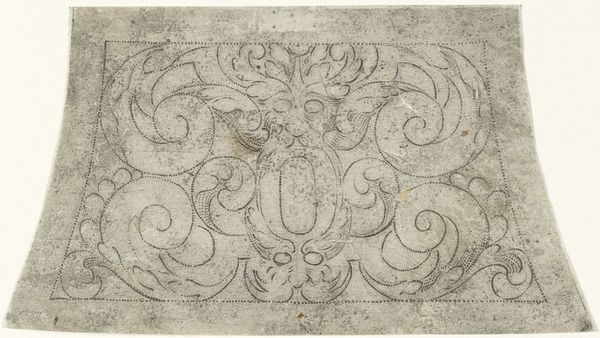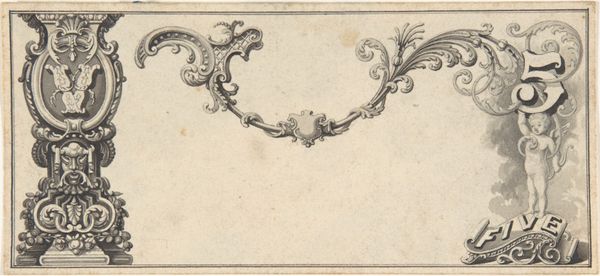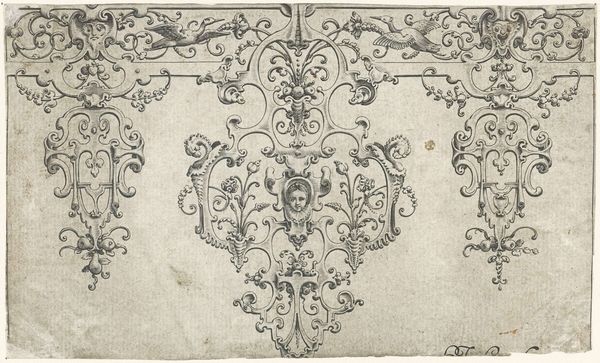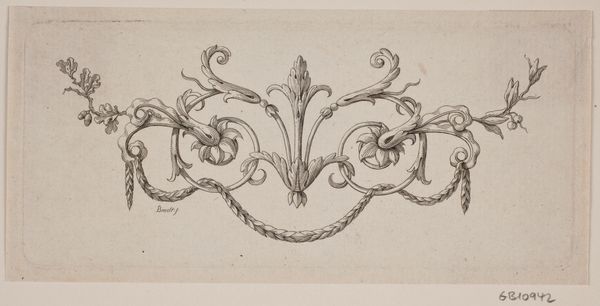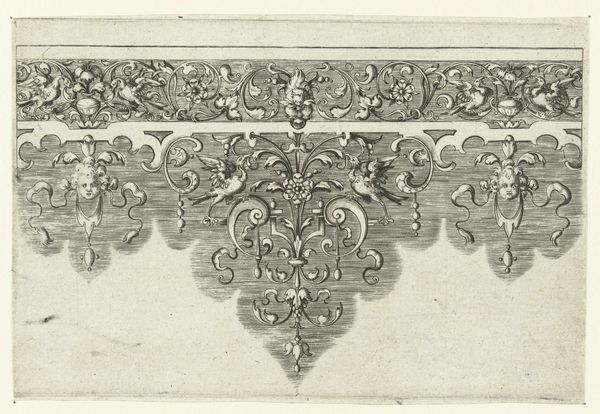
drawing, print
#
drawing
#
natural stone pattern
#
toned paper
#
light pencil work
#
pen drawing
# print
#
pen sketch
#
pencil sketch
#
old engraving style
#
flower
#
pen-ink sketch
#
pen work
#
pencil art
Dimensions: sheet: 4 1/4 x 7 1/2 in. (10.8 x 19 cm)
Copyright: Public Domain
Editor: Here we have Isaac Ware's "Design for a Staircase Ceiling," made sometime between 1751 and 1761. It’s a drawing, maybe a print too. I'm struck by how ornate and almost…theatrical it feels, even in a simple sketch. What sort of statement do you think it makes? Curator: It whispers of a society deeply invested in appearances, doesn't it? Think of the symbols employed here: floral motifs, shells, geometric patterns, and stylized faces, not necessarily in isolation but considered in terms of their effect. Each chosen to evoke luxury and grandeur, a visible manifestation of power and taste, designed for permanence. What about it speaks to you, beyond just the "theatrical?" Editor: I guess I'm thinking about where a design like this *leads* you. I mean, it is for a *staircase* ceiling, a transitional space. Is it about elevating the everyday or reminding people of their place in a grand scheme? Curator: Perhaps both. Staircases were more than just functional elements; they were stages for social display, and the ceiling design contributed to that sense of performance. The symbolism invites the inhabitants and their guests to participate in this visual dialogue, reinforcing social hierarchies but also speaking to ambition. Where would this architectural detail lead to, culturally, psychologically? Is the symmetry itself speaking to values? Editor: That’s fascinating! I hadn’t considered the staircase as a stage in itself. Curator: These symbols didn't originate in a vacuum. They’re part of a visual vocabulary that stretches back centuries, each era layering new meanings onto them. Editor: So it’s about cultural memory encoded in these details? Curator: Precisely! And decoding them helps us understand the values and aspirations of the people who commissioned and lived with these designs. And we become interpreters of its cultural lifespan. Editor: I never thought about architectural drawings carrying such weight! Curator: The beauty of art is its ability to reflect and shape our understanding of the world, even in the smallest details. I think this highlights not just design, but cultural ideology in practice.
Comments
No comments
Be the first to comment and join the conversation on the ultimate creative platform.
